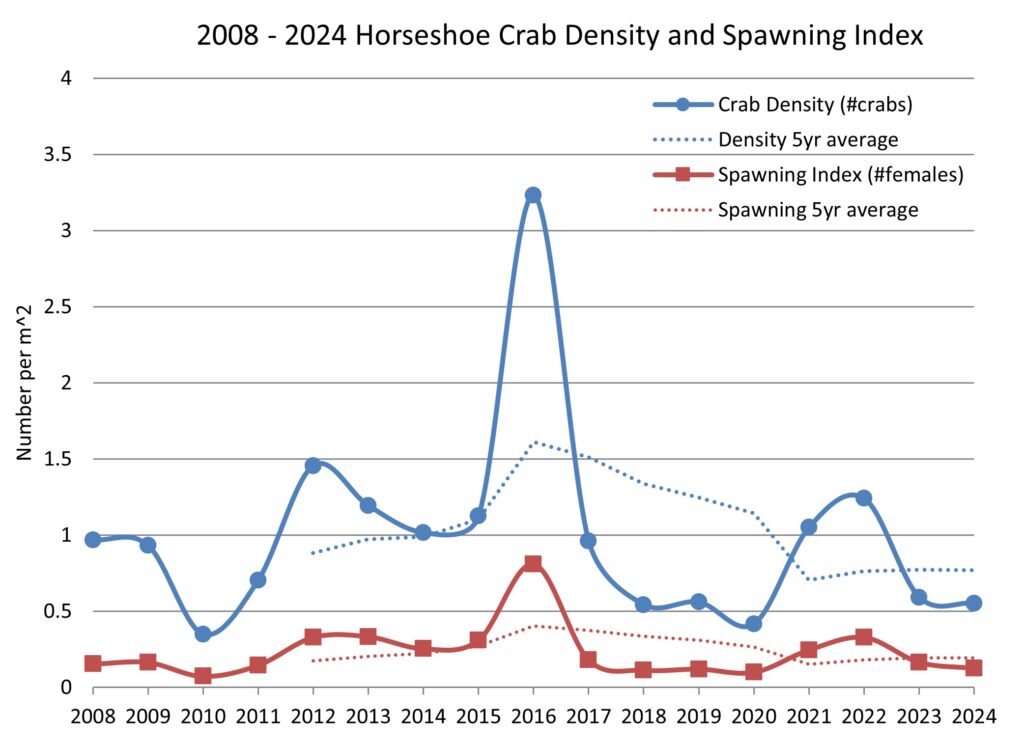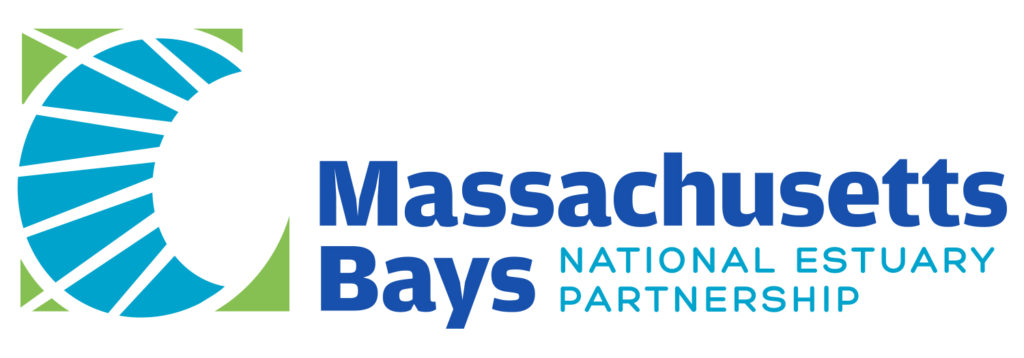
In Duxbury, NSRWA and the MassBays National Estuary Partnership Program, will be conducting its 17th year of horseshoe crab monitoring. Duxbury is one of sixteen sites across the state that are part of the Massachusetts Horseshoe Crab Spawning Surveys managed by the Massachusetts Division of Marine Fisheries (DMF). This year is particularly critical for these surveys since DMF adopted a new restriction on the harvest of horseshoe crabs just last April. The new regulation prohibits the harvest of horseshoe crabs from April 15-June 7 (during the crab’s spawning season) in all Massachusetts waters. This change is critical in protecting this species during their most vulnerable and critical life stage.
We are excited to see if the new regulations will eventually mark a rebound of horseshoe crab populations. While these crabs are cool in their own right, they also serve many important functions in our local ecology. They mix up sediment and add oxygen back into the mudflats. Their eggs are a crucial food source for migrating shorebirds, like red knots and ruddy turnstones. And they are also very important to humans – a compound in their blood is used to test for bacterial contamination; they are used for bait in the eel, conch, and whelk fisheries; and for vision research. The citizen science programs throughout the state provide critical data that help DMF manage and protect the species.

For the Duxbury surveys, NSRWA and MassBays puts out a broad call for citizen science volunteers. Partner organizations, such as Duxbury Beach Reservation, helped broaden that call throughout the community. In 2024 at least 35 individual volunteers attended a series of training sessions and then conducted 23 different surveys from May 5th to June 23rd. The surveys occur on the high tides around the new and full moons. Beaches are surveyed at both high tides during a given day. This means that about half the surveys are conducted in the middle of the night from 11pm to 3am. This makes for some incredibly unique experiences under moonlit or moonless nights out on the beach! 
For 2024, the crab density (0.55 crabs/m2) was nearly the same as 2023 and slightly lower compared to the 5-year rolling average of 0.77 crabs/m2. The spawning index (0.13 females/m2) was close to both 2023 and the 5-year average (Fig.3). We anticipate that it would take several years before the new regulations result in any changes to our local horseshoe crab populations.

Volunteer for 2025!!
This May and June, for the seventeenth year we will be conducting horseshoe crab spawning surveys in Duxbury Bay. To do this, a team of 4-5 volunteers walks/wades along a ~800 meter stretch of the Duxbury Bay shoreline north of the Powder Point Bridge. The team uses poles and rope to define a 5m x 5m square, and crabs inside the square are counted, sexed, and the different clusters in which they are arranged (single crabs, pairs, larger groups) are noted. This process is then repeated in approximately 40 squares along the shore. Surveys occur around the full and new moons in May and June. There are three daytime surveys (late morning, midday, and early afternoon) and three nighttime surveys (late evening, midnight, and early morning).
The link below will take you to a self-service, volunteer sign-up page that includes the schedule, training dates, and other important information for participating in this project.
Please click here to begin
Thank you as always for your interest, your time, and your efforts in support of the MassBays and NSRWA!


